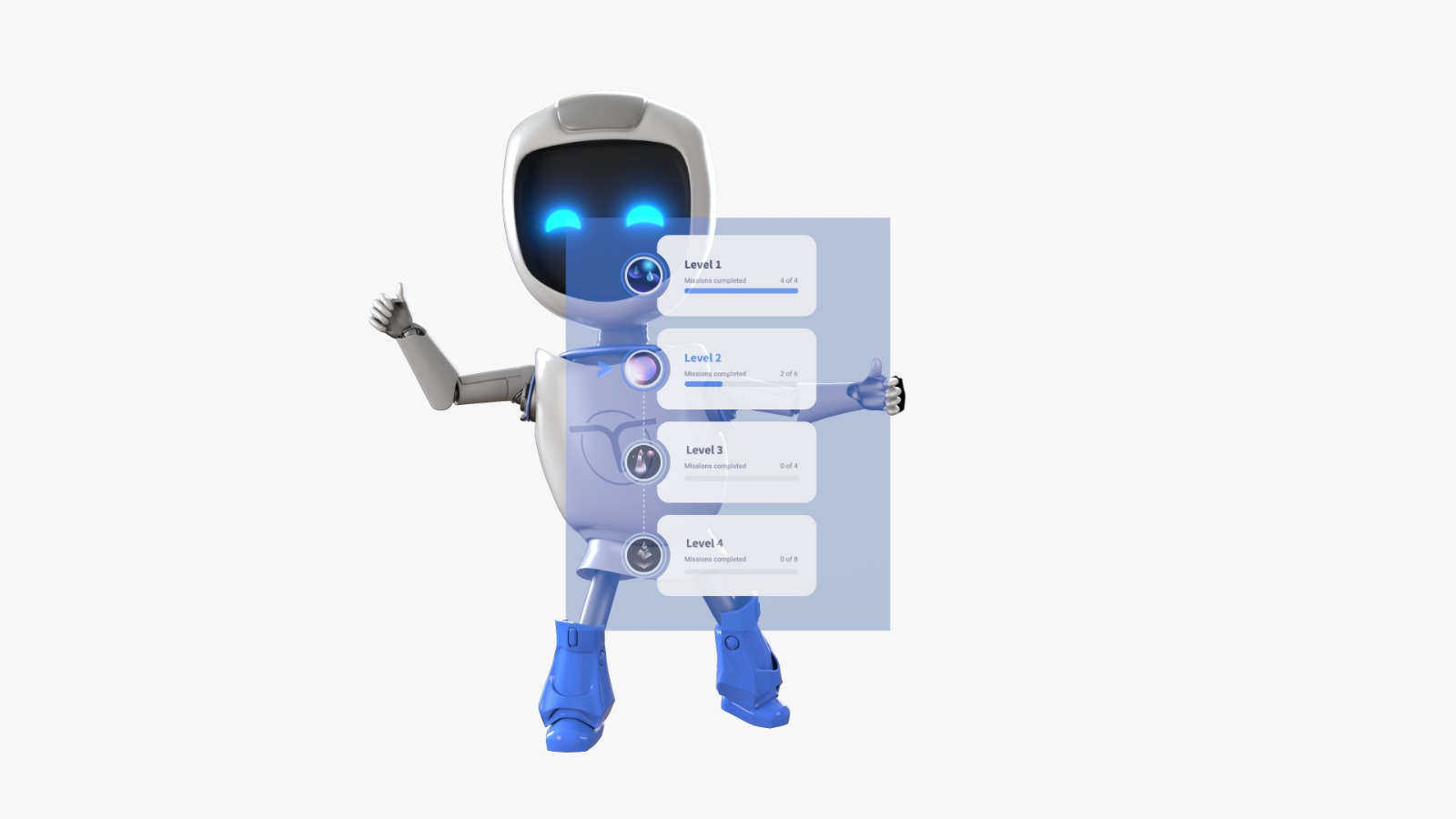[vc_row][vc_column width=”1/2″][vc_single_image image=”3402″ img_size=”500×500″ alignment=”center”][/vc_column][vc_column width=”1/2″][vc_column_text]Staff shortfalls are one of the most frequently raised challenges across all companies, big and small. Statista reports that the typical ratio between the number of employees and learning and development staff in workplaces worldwide is 330 to 1. This problem is seen as being so chronic and entrenched in areas like HR or L&D, that the term “department of one” has often been assigned to these business functions. Many times, very few people, or indeed sometimes only a single individual manage entire processes by themselves, spinning multiple plates at a time.
In this case, it is no wonder that even the most capable and motivated employees can get overwhelmed. They need to undertake long-term strategic planning, design courses and evaluate their results. Beyond this, they also have to maintain regular communications with other departments while still having to complete tedious administrative tasks. [/vc_column_text][/vc_column][/vc_row][vc_row][vc_column][vc_column_text]A quick fix would be to simply hire more people. However, the cost often forces managers to delay doing so for as long as possible to avoid spiraling expenses.
In the near future however, this difficult trade-off is set to become a thing of the past. With the development of agile, reliable generative AI solutions that can take over many of the recurrent administrative and execution tasks, L&D employees can now focus more on the most rewarding parts of their roles, and truly get the chance to make the most of their creative and problem-solving abilities. [/vc_column_text][vc_row_inner][vc_column_inner][vc_column_text]
L&D professionals have to deliver a Herculean task
It is not breaking news that HR departments – and the L&D units by extension – are frequently some of the most overburdened in business.[/vc_column_text][/vc_column_inner][/vc_row_inner][/vc_column][/vc_row][vc_row][vc_column width=”1/2″][vc_row_inner][vc_column_inner][vc_column_text]A recent study conducted across 6 countries by tech giant Sage revealed that HR employees feel overwhelmed by their workloads. A total of 95% of HR leaders said that their roles involve “too much work”. At the same time, an astonishing 81% admitted that they felt burnt out. No less than 61% said that they even consider leaving the sector because of how overwhelmed they feel by their workloads and pace of change.
In medium-sized companies, these issues are even more acute, as sometimes a single employee is responsible for all L&D duties. The Department of One faces an almost unmanageable mix of responsibilities: from training needs analysis, to program design and development, content creation, training delivery, evaluation and assessment, to name but a few.
On a regular day, this would already be plenty to keep one busy. But with the accelerating pace of change, and increased need for diverse and constantly updated trainings, the workload of L&D teams of one can quickly get overwhelming.[/vc_column_text][/vc_column_inner][/vc_row_inner][/vc_column][vc_column width=”1/2″][vc_single_image image=”3403″ img_size=”500×500″][/vc_column][/vc_row][vc_row][vc_column][vc_column_text]A study by the Society for Human Resource Management (SHRM) shows that 55% of workers say they need more training to perform their job more effectively.
According to a different survey by the SHRM, this sentiment is shared even by the new generation of employees, with 34% of gen Z members surveyed sharing that they do not think they could use their existing skill set at work. The cohort also indicated that they want to work at organizations where they can develop their abilities.
AI innovations are set to shake up the way L&D works.
As the knowledge that employees need to possess gets updated more frequently than ever, there is an accelerating need that the tools used to deliver L&D programs are renewed as well. Virtually all business areas face tough competition and profit margins are getting squeezed. Any significant recruitment drive in L&D carries substantial costs that many companies cannot afford. It is therefore clear that every aspect of the work carried by L&D professionals needs a rethink.[/vc_column_text][/vc_column][/vc_row][vc_row][vc_column][vc_single_image image=”3388″ img_size=”full” alignment=”center”][/vc_column][/vc_row][vc_row][vc_column][vc_column_text]But how could anybody in these overworked teams have the capacity to design a major overhaul of their procedures on top of their existing responsibilities? Fortunately, developments in artificial intelligence can provide the catch-22 solution that these departments are seeking.
In 2023, Generative AI platforms took the world by storm, demonstrating to everyone just how extensive the applications of the technology can be. Even though millions marveled at the astonishing productivity-enhancing potential of these platforms, many businesses are still yet to adopt them at scale in many of their functions.
So far, HR and L&D have been among the laggards in this respect. According to a recent Gartner study, only 4% of AI investments across all business functions is directed towards HR processes. This is significantly behind areas like software development (21%), marketing (19%), or customer service (16%).
However, tailored AI solutions for L&D platforms are already available – and it is a matter of months until these will be adopted at scale by businesses, whether medium or large, in order to take administrative and execution burdens off their employees’ shoulders.
Existing AI-generated microlearning platforms are perfectly capable to simply take documents that need to make the content basis of an employee training program and quickly transform them into gamified, employee-centric microlearning courses that break down effectively all the knowledge that needs to be passed on.
The wide-scale adoption of generative AI microlearning platforms will offload many of the L&D execution tasks. Everything from content development and content delivery to attendance and performance tracking and evaluation will be affected by it. Automating these responsibilities will redirect the focus of L&D professionals towards the more strategic duties of their roles, allowing them to make the most of their best creative and problem-solving abilities.
In summary
Developments in Artificial Intelligence are rightly pitched as a once-in-a-generation technological leap forward. The potential for generative AI microlearning platforms to revolutionize the entire L&D checklist is evident: from content delivery to learner feedback and from data-driven insight analysis to personalized learning, almost all areas of L&D will be affected by change.
One of the main promises of AI solutions is that they will take on most of the repetitive tasks, allowing employees to focus on the big picture – and on tackling the bigger issues. Among all units, the often-overlooked L&D departments of one are set to benefit the most from this. [/vc_column_text][/vc_column][/vc_row][vc_row][vc_column][vc_column_text]
Why not get a taste of the future?
Our award-winning microlearning platform, Code of Talent, has the ambition to make L&D programs fit for the future. You will be able to test-drive an AI-powered microlearning solution designed to easily create personalized training focused on acquiring and applying new knowledge and skills. Performance measurement is a key component of our vision.
You can try it now for free by clicking here.[/vc_column_text][/vc_column][/vc_row]





